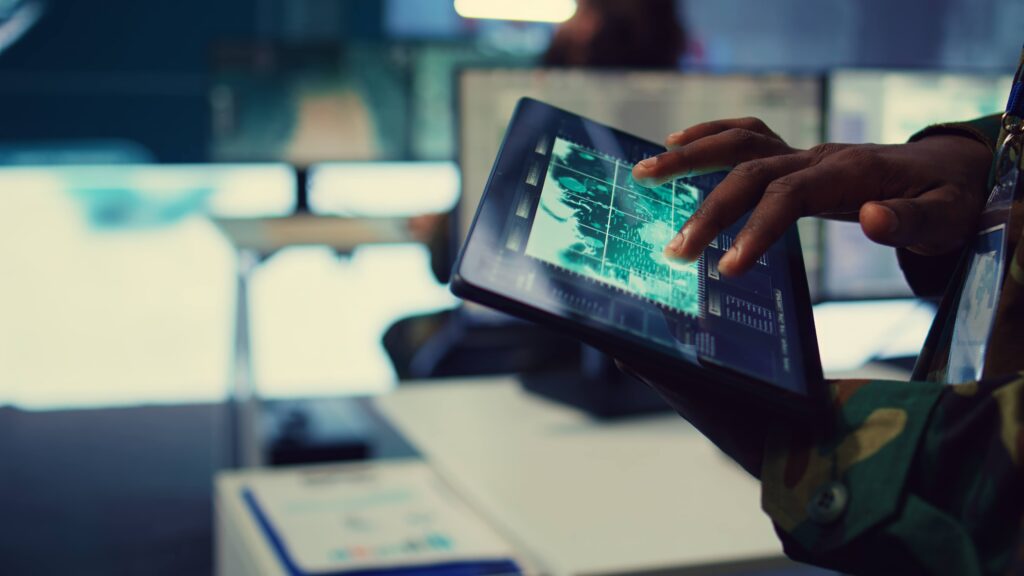Online shopping has become a convenient way to purchase goods and services, but it also comes with risks. Cybercriminals are constantly looking for ways to exploit vulnerabilities and steal sensitive information. This article provides detailed cybersecurity tips to help online shoppers protect themselves from potential threats. By following these guidelines, you can shop online with confidence and reduce the risk of falling victim to cyberattacks.
Risks of Online Shopping
Before diving into the tips, it’s important to understand the risks associated with online shopping. Cybercriminals use various tactics to target shoppers, including phishing scams, malware, and fake websites. These threats can lead to identity theft, financial loss, and unauthorized access to personal information. Being aware of these risks is the first step toward protecting yourself.
Table of contents
- Risks of Online Shopping
- Essential Cybersecurity Tips for Online Shoppers
- Use Strong, Unique Passwords
- Enable Two-Factor Authentication (2FA)
- Shop on Secure Websites
- Keep Your Software Updated
- Be Cautious with Public Wi-Fi
- Monitor Your Financial Statements
- Use a Credit Card Instead of a Debit Card
- Be Skeptical of Too-Good-to-Be-True Deals
- Avoid Saving Payment Information
- Educate Yourself About Common Scams
- Advanced Cybersecurity Measures for Online Shoppers
- Frequently Asked Questions (FAQ)
- 1. What should I do if I suspect a phishing attempt?
- 2. How can I tell if a website is secure?
- 3. Is it safe to shop on my mobile device?
- 4. What should I do if my credit card information is stolen?
- 5. How often should I change my passwords?
- 6. Can a VPN protect me while shopping online?
- 7. What are the signs of a fake website?
- 8. Should I use the same password for multiple accounts?
- 9. How can I protect my personal information online?
- 10. What should I do if I fall victim to a cyberattack?
- Conclusion
Phishing Scams
Phishing scams involve cybercriminals posing as legitimate entities to trick you into providing sensitive information. These scams often come in the form of emails, text messages, or fake websites that appear genuine. Always verify the sender’s identity and avoid clicking on suspicious links.
Malware Attacks
Malware is malicious software designed to damage or gain unauthorized access to your device. It can be downloaded unknowingly when you click on malicious links or download files from untrusted sources. Malware can steal your personal information, including credit card details and login credentials.
Fake Websites
Fake websites are designed to look like legitimate online stores. They often offer products at unbelievably low prices to lure shoppers. Once you enter your payment information, the cybercriminals can use it for fraudulent activities. Always check the website’s URL and look for security indicators before making a purchase.
Essential Cybersecurity Tips for Online Shoppers
Now that you understand the risks, let’s explore some essential cybersecurity tips to help you shop safely online.
Use Strong, Unique Passwords
One of the simplest yet most effective ways to protect your online accounts is by using strong, unique passwords. Avoid using easily guessable passwords like “123456” or “password.” Instead, create complex passwords that include a mix of letters, numbers, and special characters. Consider using a password manager to generate and store your passwords securely.
Enable Two-Factor Authentication (2FA)
Two-factor authentication adds an extra layer of security to your online accounts. In addition to entering your password, you’ll need to provide a second form of verification, such as a code sent to your phone. This makes it much harder for cybercriminals to gain access to your accounts, even if they have your password.
Shop on Secure Websites
Always ensure that the website you’re shopping on is secure. Look for “https://” at the beginning of the URL and a padlock icon in the address bar. These indicators show that the website uses encryption to protect your data. Avoid entering sensitive information on websites that don’t have these security features.

Keep Your Software Updated
Regularly updating your software, including your operating system, web browser, and antivirus programs, is crucial for maintaining cybersecurity. Updates often include security patches that fix vulnerabilities that cybercriminals could exploit. Enable automatic updates to ensure you’re always protected.
Be Cautious with Public Wi-Fi
Public Wi-Fi networks are often unsecured, making them a prime target for cybercriminals. Avoid making online purchases or accessing sensitive accounts when connected to public Wi-Fi. If you must use public Wi-Fi, consider using a virtual private network (VPN) to encrypt your internet connection and protect your data.
Monitor Your Financial Statements
Regularly check your bank and credit card statements for any unauthorized transactions. If you notice any suspicious activity, report it to your financial institution immediately. Early detection can help minimize the damage caused by cyberattacks.
Use a Credit Card Instead of a Debit Card
When shopping online, it’s safer to use a credit card rather than a debit card. Credit cards offer better fraud protection, and you’re less likely to lose your own money in case of a security breach. Many credit card companies also provide additional security features, such as virtual card numbers for online purchases.
Be Skeptical of Too-Good-to-Be-True Deals
If a deal seems too good to be true, it probably is. Cybercriminals often use attractive offers to lure shoppers into providing their personal information. Be cautious when encountering such deals and research the seller before making a purchase.
Avoid Saving Payment Information
While it may be convenient to save your payment information on shopping websites, it also increases the risk of your data being compromised in case of a security breach. Enter your payment details manually each time you make a purchase to reduce this risk.
Educate Yourself About Common Scams
Staying informed about the latest scams and tactics used by cybercriminals can help you avoid falling victim to them. Follow reputable cybersecurity blogs and news sources to stay updated on emerging threats.
Advanced Cybersecurity Measures for Online Shoppers
For those who want to take their online security to the next level, consider implementing these advanced measures.
Use a Dedicated Email for Online Shopping
Creating a separate email address for online shopping can help protect your primary email account from spam and phishing attempts. If your shopping email is compromised, your primary email and other accounts will remain secure.
Install a Reputable Antivirus Program
A reliable antivirus program can detect and remove malware before it causes harm. Ensure that your antivirus software is up to date and run regular scans to keep your device secure.
Consider Using a Virtual Credit Card
Some banks and credit card companies offer virtual credit cards for online purchases. These cards generate a unique card number for each transaction, making it difficult for cybercriminals to use your information for fraudulent activities.
Regularly Review Your Privacy Settings
Check the privacy settings on your online accounts and social media platforms to ensure that your personal information is not being shared unnecessarily. Limit the amount of information you share online to reduce the risk of identity theft.
Use a Firewall
A firewall acts as a barrier between your device and the internet, blocking unauthorized access. Ensure that your firewall is enabled to add an extra layer of protection to your online activities.
Frequently Asked Questions (FAQ)
1. What should I do if I suspect a phishing attempt?
If you suspect a phishing attempt, do not click on any links or provide any personal information. Report the suspicious email or message to the legitimate company it claims to represent and delete it immediately.
2. How can I tell if a website is secure?
A secure website will have “https://” at the beginning of the URL and a padlock icon in the address bar. These indicators show that the website uses encryption to protect your data.
3. Is it safe to shop on my mobile device?
Shopping on a mobile device can be safe if you take the necessary precautions. Ensure that your device’s operating system and apps are up to date, and avoid using public Wi-Fi for online purchases.
4. What should I do if my credit card information is stolen?
If your credit card information is stolen, contact your credit card company immediately to report the fraud. They can cancel the card and issue a new one. Monitor your statements for any unauthorized transactions.
5. How often should I change my passwords?
It’s a good practice to change your passwords every three to six months. Additionally, change your passwords immediately if you suspect they have been compromised.
6. Can a VPN protect me while shopping online?
Yes, a VPN can protect your data by encrypting your internet connection. This is especially useful when using public Wi-Fi networks, as it prevents cybercriminals from intercepting your information.
7. What are the signs of a fake website?
Signs of a fake website include poor design, spelling and grammar errors, and offers that seem too good to be true. Always check the website’s URL and look for security indicators before making a purchase.
8. Should I use the same password for multiple accounts?
No, using the same password for multiple accounts increases the risk of all your accounts being compromised if one password is stolen. Use unique passwords for each account to enhance security.
9. How can I protect my personal information online?
To protect your personal information online, use strong passwords, enable two-factor authentication, and avoid sharing sensitive information on unsecured websites. Regularly review your privacy settings and monitor your financial statements for any suspicious activity.
10. What should I do if I fall victim to a cyberattack?
If you fall victim to a cyberattack, act quickly to minimize the damage. Change your passwords, contact your financial institutions, and report the incident to the appropriate authorities. Consider seeking help from a cybersecurity professional to secure your accounts and devices.
Conclusion
Online shopping offers convenience and a wide range of options, but it also comes with cybersecurity risks. By following the tips outlined in this article, you can protect yourself from cyber threats and shop online with confidence. Remember to use strong passwords, enable two-factor authentication, shop on secure websites, and stay informed about the latest scams. Taking these precautions will help you enjoy a safe and secure online shopping experience.
Stay vigilant, and always prioritize your cybersecurity when shopping online. Your personal and financial information is valuable, and protecting it should be a top priority.

